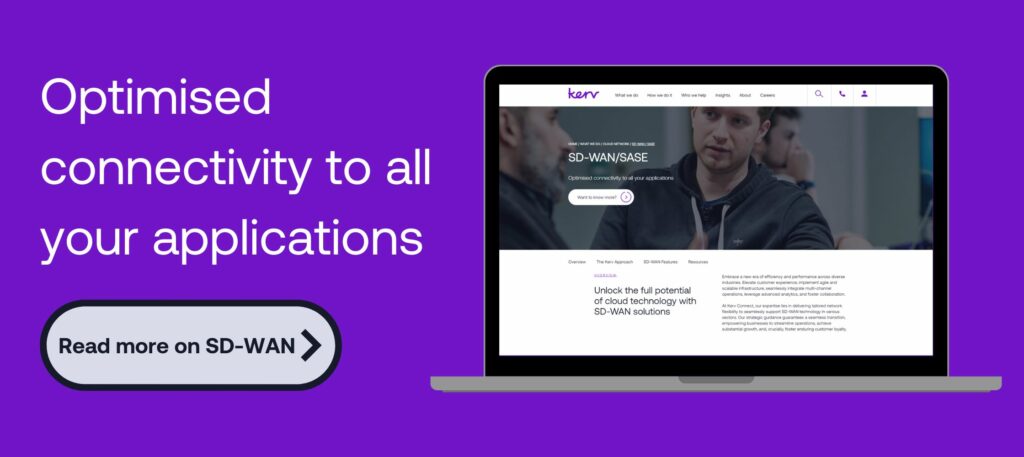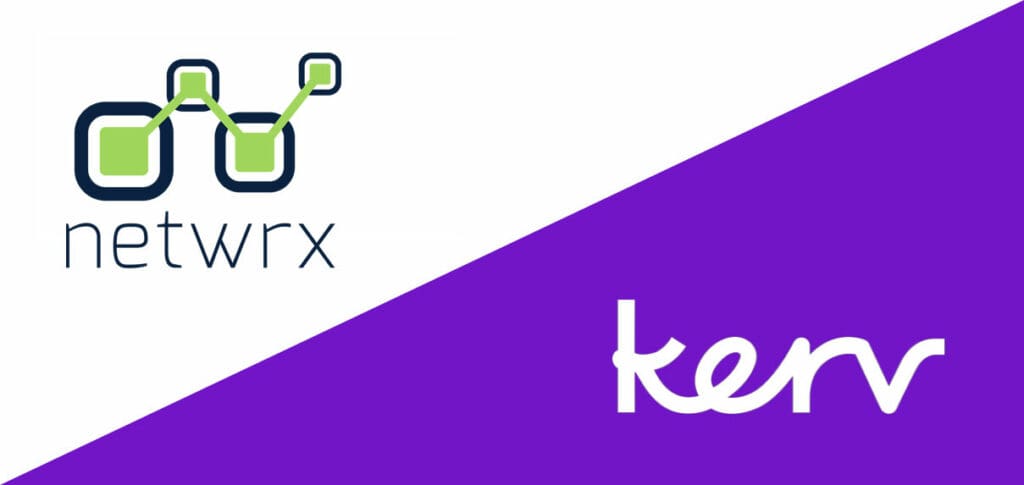
Richard Norman
Chief Technology Officer, Kerv Connect|Kerv
Have a question?
Get in touchPublished 01/11/22 under:
Degraded is the new down
As users and consumers of IT, we have a very limited, external view of what’s going on behind the applications we use on a day-to-day basis. Sat in front of our laptop or on our mobile phone, we can’t see how different processes and technologies hang together to make our applications work, we can only see how it responds when we press buttons or engage with content.
If everything works as expected, we probably don’t think about what’s going on behind the scenes. However, if something isn’t working, we do notice, and we consider that to be a bad experience.
What’s often even worse is if something is working, but much more slowly than expected. It something doesn’t work, it doesn’t work, and you can take action. If it’s sort of working but taking a really long time, that can be absolutely infuriating, translating into wasted time and lost man hours that can turn into tangible losses for business.
For this reason, at Kerv we talk a lot about how “degraded is the new down”. Application performance is a vital part of providing a great user experience – it’s not enough for something to work, it has to be working well.
The network is the scapegoat for user experience
As end users, the first thing we blame for a degraded experience is usually the network. When we press a button and nothing much happens, we usually manifest our frustration with a complaint like “ugh, the network is slow today”, or “the Wi-Fi is rubbish here”.
The challenge is that in reality there’s a lot more going on there than just the network.
The network provides connectivity, but in order for an application to work over that medium there is a lot to orchestrate. For instance, you have to be authenticated for application you’re using, and these systems may be slow and not performing well. There could also be problems with the part of the system that renders an application into a web format within a browser, or any number of other problems across multiple different technology silos. These aren’t necessarily a network function, but they’re a critical path governing how your experience looks and feels.
For the user, it’s impossible to tell that it’s the authentication medium or some other technological element that is struggling to respond, so they blame the network, fairly or (more often) unfairly. That means that it’s the network team’s job to demonstrate it’s not their fault, and that means tracking down the actual location of the fault, and offering remedial options where possible.
Applications are becoming more complex
The network team’s role in identifying the root cause of performance issues is a challenging one, because applications themselves are becoming way more complex. Increasingly, the sort of applications that we engage with are what’s called distributed applications, which means that they are not controlled in one place; they’ve got arms and legs everywhere.
If you actually laid out from end to end all of the component parts of an application, you’d be really surprised how far they can reach. We saw a visualisation quite recently of a Microsoft Dynamics CRM system, which is part of the Microsoft Software as a Service. It breaks out into services that are delivered for nearly 37 different physical locations in Europe, so you can imagine all the network connections that are needed and all of the component parts that need to be orchestrated in order to deliver that visualisation of that application. In order for that application to work properly, all 37 locations, all connections into those data centers need to be working in an orchestrated way. If one needs to load in order for you to complete the workflow that you need to do and it’s struggling, then you’ll see an impact on application performance and end user experience.
The same concept can apply for just about any application, whether it’s an ecommerce website, a video call platform, a CRM system or just about any other software you might use day-to-day. Each one will have a huge range of component parts stored in different places, some of which are on the critical path you need to use to get your work done, and some of which are not.
Tracking down the root cause of performance issues in distributed applications can be extremely complex, because these applications don’t tend to sit in one location anymore. Some data could be sat within a corporate data center, some in AWS in the public cloud, with more still stored in Microsoft Azure. Quite often you may not even have control over parts of your infrastructure any more; your issue could be down to a problem with Microsoft’s network, or Amazon’s, or Google’s.
SD-WAN: re-routing for experience
SD-WAN can be a great help in dealing with these types of complex performance issues, because it’s able to automatically navigate around the problem. Previously, if something wasn’t responding in a timely fashion, the only solution is to drill down and identify the problem. Instead, SD-WAN can try to take another route to bypass the issue. If the problem is intermittent, it will take remedial action by automatically sending more than one copy of the data to increase the chances of it making a successful journey.
This is a huge step forward, because prior to this approach, something would have to go down entirely before the network would flip to an alternate route. If it worked, no matter how slowly, nothing would change. SD-WAN is able to understand when a link is operational but degraded, and since often the biggest issues with application experience trace back to degraded links, it’s able to respond to this in a way that traditional WAN isn’t.
While it’s not necessarily solving problems, SD-WAN is really effective at improving end user application experience, by giving you visibility when problems are occurring, and automatically remediating around them if it has options to be able to remediate around them.
Shining a light through the user journey
Another approach to picking apart application performance issues that’s becoming much more prevalent is the ability to be able to shine a light through the user journey on a per application basis. In particular, we’re seeing the integration of SD-WAN into a series of technologies that get bundled into so-called “artificial intelligence operations” or “AI-ops”.
In the networking world we’re used to understanding the component parts of a network and monitoring each one to make sure that each part is working well and within parameters. That gives us a birds-eye view of performance, but it becomes much more challenging when we’re working with complex distributed applications, when a particular user may only be reliant on a few components of an extremely complex application.
In those situations, it’s more useful to shine a light down the path an individual user takes to identify what’s going on. This more granular approach to understanding user experience gives us the full context of what the end user is experiencing at every part of that journey. Artificial intelligence can then collate these journeys to provide a holistic view of how component parts are functioning in different user journeys, and start to correlate where issues are occurring most frequently. As that awareness develops, SD-WAN can step in to take proactive steps to navigate around emerging issues.
Kerv Connect: pinpointing application performance issues
Networking is, unfortunately, a really good example of an industry where you are guilty until proven innocent.
Picking through a mess of different application components spread across multiple data centres is no easy task, which is why we employ the people we do at Kerv Connect. Our experts are masters of tracking down problems in infinitely complicated environments, and can help you to leverage SD-WAN and AI technology to deliver the best possible application experience to your users even when third-party networks are causing issues beyond your control.
To find out more about how Kerv Connect can help you leverage SD-WAN solutions to boost your user experience, increase productivity and satisfaction with your network, get in touch today.
Have a question?
"*" indicates required fields







